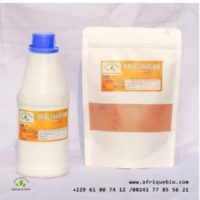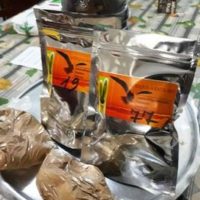Description
Uterine Adherence Natural Solution Synechia. We offer the best tea. Discover here an excellent treatment that allow to avoid surgery of uterine synechia. Find here the effective natural treatment to treat uterine synechia with plants.
To chat with a health expert, please contact us https://wa.me/22965015222
Write us by mail: worlatif@gmail.com
Presentation of Uterine Adherence Natural Solution Synechia
Powder in sachet
Composition: plants extracts, antitumors, anticancer
Proprieties: malignant tumor reducers, immunoreconstituent
Manual: read the leaflet
Side effects: No one
Duration of the treatment: 3 months
Price: 50 euros
Definition of Uterine Adherence
An intrauterine adhesion or synechia of the uterus or Asherman’s Syndrome corresponds to more or less extensive intrauterine shoulders or flanges. They may be single or multiple; sitting on the cervix (intracervical synechia), the isthmus (isthmic synechia), the uterine body (corporal synechia) or the uterine horns (cornual synechia). They can be partial or total, occupying part or all of the uterine cavity respectively. Herbal tea 272 works well for partial adhesion and the situation becomes very complicated in the case of total intrauterine adhesion. Please advise before starting treatment.
Please write to us at 0022965015222
Researches associated
How to Cure Uterine Adherence Naturally?, What are the Causes of Synechia?, Pregnant with Synechia, Plants to Cure Adherence of Synechia, Best remedy to Heal Synechia, How to Know if I Have Synechia?, Natural Medecine to Get Rid of Synechia, What are the consequences of Uterine Adherence?, Pains after curettage of uterine, Definition of Uterine Adherence, Uterine Synechiae Natural Treatment, Uterine Synechiae and Pregnancy Complications, Treatment of Uterine Synechiae Without Hysteroscopy, Can I Have Baby With Uterine Scarring?, What is Mild Uterine Synechiae?, Does Uterine Synechiae Cause Miscarriage?, What causes synechiae in pregnancy?
Consequences of Uterine Adherence Natural Solution Synechia
An intrauterine adhesion can remain asymptomatic to be discovered fortuitously in the search for a cause of infertility or repeated miscarriages by hysterography, hysteroscopy or during an anatomopathological examination of the uterus. In the case of intrauterine adhesion or synechia of the uterus or Asherman’s Syndrome, anomalies of the menstrual cycle such as hypomenorrhoea (insufficient menstruation) and secondary amenorrhoea (absence of menstruation) due to curettage. Synechia has the immediate consequence of female infertility or repeated miscarriages. It can be the cause of endometrial abnormalities making implantation of the pregnancy impossible. Indeed, it causes also repeated; early or late abortions, premature deliveries, vicious presentation of the foetus during labour, placenta abnormalities (placenta previa, placenta accreta). Hypomenorrhoea is explained by the decrease in the functional surface of the endometrium due to the presence of partial uterine synechia.
Likely Causes of Adhesion in the Uterus
Synechia is the result of a trauma to the uterine mucous membrane which has caused the destruction of its basal layer. Thus, an adhesion consists of a simple mucous membrane flange, easily lifted by the passage of the hysteroscope during a diagnostic hysteroscopy. In the absence of treatment, this loose flange becomes fibrous, resistant, more or less thick, then muscular. It is then no longer covered with endometrium. A uterus loses endometrium in the case of persistent synechia.
Risk Factors for Synechia
Synechia can be caused by the following circumstances:
Curettage or aspiration for spontaneous miscarriage or for voluntary termination of pregnancy, post abortum or post partum curettage.
Retention of an arrested pregnancy, placental retention after childbirth or after termination of pregnancy.
Surgical hysteroscopy with fibroid resection, polyp resection, curettage of uterine malformation, endometroctomy, miscarriage during cervical dilatation.
Pelvic post-radiotherapy for cancer.
Certain factors favour the development of uterine synechia following endometrial trauma:
– Softened uterus: this is the case during an advanced pregnancy; retention of a dead egg; postpartum (after childbirth).
-The technique of uterine evacuation with a respectively increased risk when using a suction cannula, a foam curette or a window curette.
-An occurrence of an infection following uterine evacuation.
-The presence of two traumatised areas of the endometrium facing each other, thus favouring healing in the form of a « fibrous bridge » through direct contact
Please discover also herbal tea 17, Herbal tea 18, Herbal tea 19
Diagnosis
The diagnosis of synechia must be discussed and confirmed when its presence causes cycle disorders or infertility. Synechia is not visible during a simple consultation with the gynaecologist. It often requires extensive examinations such as
A Pelvic Ultrasound
Often performed as a first intention treatment because it is painless and non-invasive. It can produce an intra-uterine image of a flange, associated with the presence of blood retention in the uterus (haematometry).
Hysterosalpingography
When exploring the permeability of the fallopian tubes as part of an infertility check-up or when assessing the morphology of the uterine cavity as part of a repeated miscarriage check-up, the diagnosis of synechia is evoked by the presence of an intrauterine image in the form of a flange or a punched hole connecting the two sides of the endometrium. It can be more or less extensive or even completely prevent the opacification of the cavity by the contrast medium.
Diagnostic hysteroscopy
A hysteroscopy is the reference examination to detect synechia of the uterus. It allows the diagnosis to be made by direct visualization of the synechia. Hysteroscopy enables the position and extent of the uterus, the quality of the endometrium remaining in the uterine cavity and the permeability of the tubal openings to be accurately assessed. In the event of a favourable prognosis, this assessment enables the indication for surgery to be made when surgical treatment is envisaged.
Note: Please read the rest of the page while clicking on the coloured words to go further. Please click on all links. A link contains valuable information such as a recipe, a coupon code or other useful information. Click on the links while remaining on the page. Please be sure to return to the page.





Commentaires récents